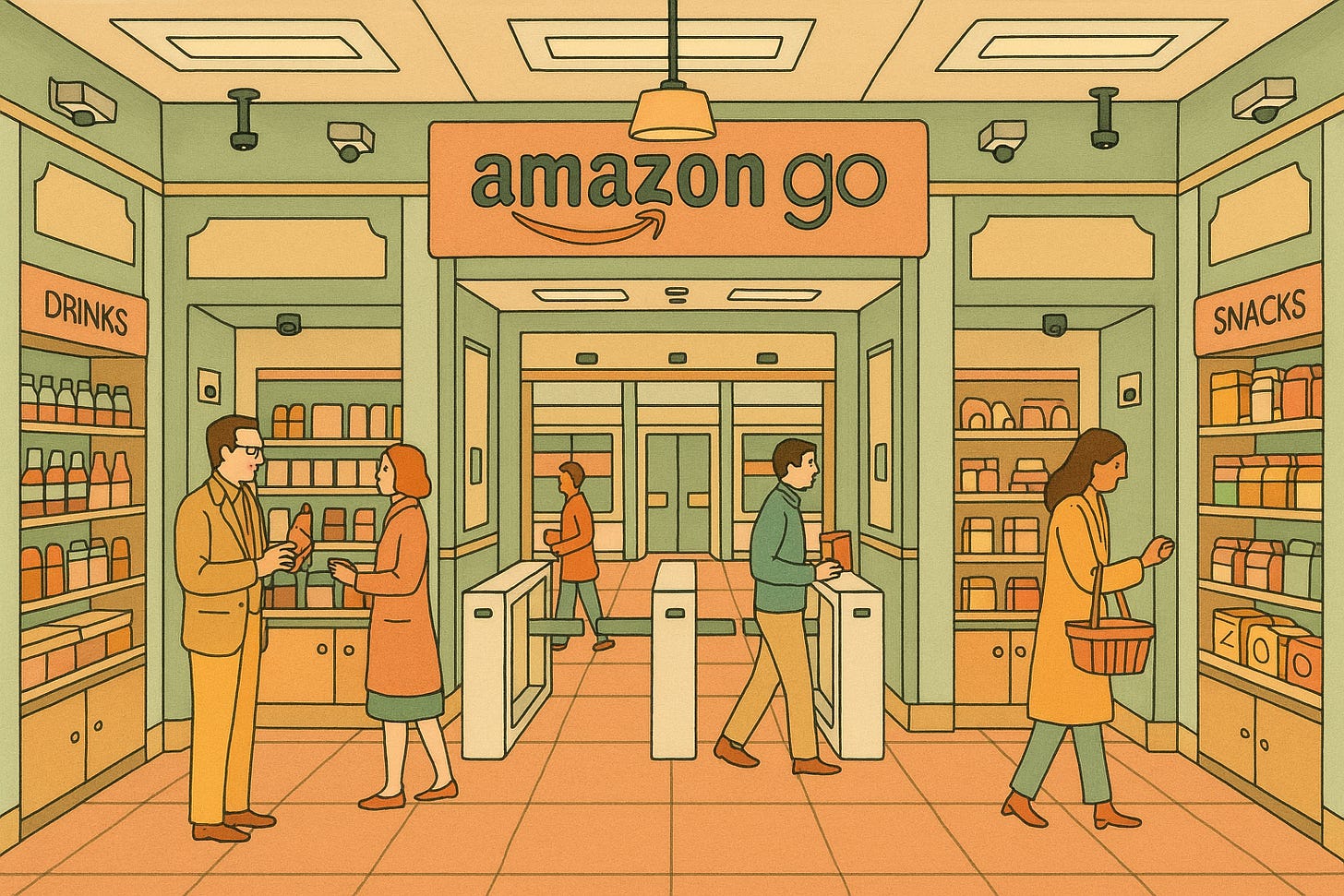Customer Experience Management: Past, Present, and AI-Powered Future
The Timeless Importance of Personal Service
It’s always useful to look to the past as we design the future. In the 1950s, department stores built their reputation on highly personalized customer service. Knowledgeable salespeople would greet customers with a smile, address them by name, and cater to their every need. This empathetic human-to-human interaction was the definition of outstanding retail experience – it made customers feel valued and led to loyalty and repeat business. The customer was truly “king,” and businesses took pride in delivering quality products with exceptional service and attention to detail. Even as decades have passed, one thing remains constant: focusing on the customer’s experience and needs is at the heart of driving sales.
Evolving Complexity in Modern Retail
Fast-forward to today’s digital age- customer interactions span websites, mobile apps, and physical stores. Moving customers through their purchase process now demands an ever-increasing attention to detail and focus on myriad levers that drive conversion. Modern enterprise commerce platforms are connected to back-end systems (inventory, CRM, analytics) that provide a flood of data points to optimize the shopping journey. Factors like product selection, pricing, promotions, website performance, reviews, and page layout all influence conversion rates. In fact, studies show personalization alone can boost online conversion rates by up to 20%, and 40% of shoppers say that personalized experiences directly influence their purchase decisions. Targeted campaigns and recommendations can further increase conversions by as much as 50%. The equation is clear: as retailing integrated more data and touchpoints, delivering a seamless, personalized experience has become exponentially more challenging – yet more critical than ever.
Large product catalogs illustrate this complexity. As retailers expanded from a few hundred SKUs to tens of thousands, customers gained abundant choice – but risked information overload. Massive catalogs generate vast amounts of data on products and customer behavior, and analyzing this data to personalize the experience can be overwhelming without the right tools. Shoppers may face the digital equivalent of “overflowing shelves” if sites are not intelligently organized. The complexity of personalization grows exponentially with more products and channels. Retailers have responded by investing in advanced experience management platforms to tame this complexity. Modern e-commerce platforms aim to make finding “exactly the right product, at exactly the right time, for exactly the right price” a reality for each customer– a tall order that calls for cutting-edge technology behind the scenes.
Data-Driven Personalization: Fueling the Experience
The key to delivering a fully personalized retail experience at scale is data. Today’s product catalogs no longer contain just a title, a few bullet points, and a price. They now attach reams of metadata to each SKU– from detailed attributes (e.g. color, style, material) to performance insights (which images, descriptions, or page layouts best drive engagement). Retailers leverage this metadata to dynamically decide how, when, and where each product is presented to each customer, in order to increase conversion. For example, consistent product tagging and rich metadata enable better search results and personalized recommendations: a customer who browses floral summer dresses might immediately see other dresses with similar attributes, thanks to tags like pattern, fabric, or trend. This level of personalization goes far beyond the “one-size-fits-all” merchandising of the past– every element of the shopping journey can now be tailored.
Crucially, data is not just limited to product info, but also spans user behavior and context. Retailers collect and analyze browsing history, past purchases, demographic details, and even real-time context (e.g. device or location) to refine the experience. Advanced customer experience platforms integrate a nearly limitless array of customer and product parameters– all this data is the fuel for AI engines that determine the optimal content for each user. Studies indicate about 71% of online customers now expect these tailored options, and are frustrated when they don’t get them. The payoff for businesses is tangible: well-executed personalization can boost customer retention by 44% and encourage more frequent repeat visits. In short, data-driven personalization turns the overwhelming complexity of big catalogs and big data into an asset– enabling richer, more relevant experiences that keep customers engaged.
AI-Powered Personalization at Scale
Artificial Intelligence (AI) is delivering on the promise of a fully personalized retail experience, at scale. Traditional rules-based personalization (e.g. showing a “new visitor” a generic promo) has given way to AI models that can analyze enormous, complex datasets and act on them in real time. Machine learning algorithms can synthesize data from every source imaginable – online behavior, in-store interactions, supply chain, social media– and rapidly spot patterns that even savvy human marketers would miss. By removing human bias and crunching vast data, AI uncovers opportunities to increase conversions and revenue that previously went unnoticed. The result is predictive, adaptive retail experiences: what each shopper sees is dynamically generated based on what an AI believes will most likely resonate with them.
For example, AI-driven recommendation engines analyze a shopper’s browsing and purchase history to suggest products they are likely to love – a strategy famously pioneered by Amazon to great success. Personalization isn’t limited to just products, however. Next-gen commerce management platforms can integrate pricing and promotion parameters as well, identifying the perfect combination of product, price, and promotion for every customer in real time. Personalized pricing and promotions are becoming a reality: AI-based analytics can parse vast customer data to create optimal pricing plans or discounts tailored to each segment or individual. A loyalty shopper might receive a special offer just for them, while another customer might see a price adjusted based on real-time demand and stock levels (akin to dynamic pricing used in airlines). Retail marketers are embracing these tools – over half of retail marketers globally are already using AI-driven personalization across channels to drive growth and manage real-time customer interactions.
An AI-powered retail experience: Amazon Go stores use computer vision and automation to deliver a checkout-free, personalized shopping journey.
The impact of AI in customer experience management is evident in emerging retail concepts. Consider Amazon Go, the chain of cashier-less convenience stores. These stores use AI (computer vision, sensors and algorithms) to automatically track what customers pick up, so shoppers can “grab and go” without waiting in line. It’s a frictionless experience that mimics having an attentive shopkeeper– except the role of the shopkeeper is played by an array of AI systems. AI and machine learning can adjust the retail experience on the fly based on situational context. Depending on where a customer is in their journey– browsing on a phone at home, walking into a store, or at the checkout page– the messages and content can adapt in response. This adds a highly personalized dimension to the experience, delivered instantly and at scale, far beyond what a human staff could manage for millions of customers simultaneously.
AI is also enabling retailers to identify and focus on their most valuable customers automatically, while efficiently nurturing others with potential. Predictive models can pinpoint which shoppers are likely to become high-value, which are at risk of churn, and what specific actions (offers, support, product education) will best influence each. In essence, AI gives retailers the analytical superpowers to treat every customer as if you had a personal concierge guiding them. The results are richer and more compelling experiences – customers find exactly the right product, at exactly the right time, for exactly what they are willing to pay, often before they consciously realize what they want.
Conclusion: The Future – Personalized Service, Anytime, Anywhere
From the courteous sales associate of the 1950s to the intelligent algorithms of today, customer experience management has always been an art form built on understanding and meeting customer needs. The tools and technologies have changed dramatically – shiny storefronts and hand-written ledgers have given way to AI-driven apps and data warehouses – but the end goal remains the same: delighting each customer to drive engagement and conversion. Performant AI commerce platforms now deliver on this timeless promise of personalization at scale, effectively acting as the “highly-informed salesperson, catering to your every need, at any time of day, anywhere in the world.” The retailers that succeed will be those who marry the lessons of the past (genuine customer-centric service) with the possibilities of the future (data and AI-powered personalization). It’s an exciting time where the synergy of human insight and artificial intelligence can create customer experiences more magical than ever – a future where every shopper enjoys the personal attention of a bygone era, with the convenience and choice of modern digital commerce.
Sources:
Tacey Atkinson, “Timeless Appeal of 1950’s Customer Experience,” Customers First blog, May 2023.
Adobe Enterprise Blog, “Personalization at scale for retailers: AI, authentic retail personalization,” 2018.
Belov Digital Agency, “The Role of Personalization in E-commerce Conversion Optimization,” Jun. 2025.
Clarity Ventures, “10 Best Enterprise eCommerce Platforms (2025 Buyer Guide),” May 2025.
Miva Blog, “Mastering Large Catalogs: The Ultimate Ecommerce Guide,” May 2024.
Pixelz Blog, “The Power of Product Tagging in E-commerce,” Jun. 2024.
XCube Labs, “Personalization at Scale: AI in Retail,” Mar. 2024.
U.S. Chamber of Commerce – CO, “What Is AI Price Optimization?” Oct. 2023.



